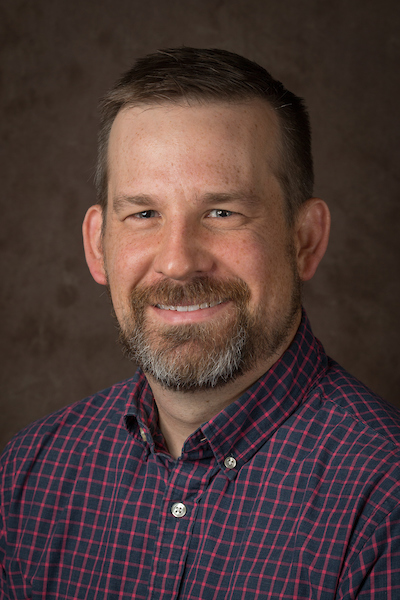
Matthew Saxton
Contact Info
Education
Ph.D., Microbiology, University of Tennessee-Knoxville (2011)
Biographical Information
Our lab is interested in how microorganisms in the aquatic systems respond to changes in their environment. These changes may be caused by human activities or occur naturally. We use a combination of classical culture-based microbiological techniques and cutting edge high-throughput nucleic acid sequencing techniques. Ongoing projects include:
Microbial partners of cable bacteria - Cable bacteria are long filamentous microorganisms that act as electrical conductors in aquatic sediments providing a conduit for rapid electron transport from sulfide-generating horizons up to the oxic surface. These bacteria have been observed in freshwater, estuarine, and marine sediments globally, often at extremely high cell densities. Where these bacteria are abundant, such as in coastal marine sediments, they can drive intense localized changes in pH and strongly influence the cycling of oxygen, sulfur, iron, and other nutrient cycles. We are investigating how cable bacteria shape bacterial communities by manipulating their environment and how these community impacts shape carbon and sulfur cycling in these sediments.
Impact of terrestrial chemicals on aquatic microbial communities - Harmful Algal Blooms (HABs) have been a significant problem in the western basin of Lake Erie since the late 1990s and have been significantly increasing in severity over the last decade. Numerous studies suggest nutrient loading as the result of runoff from agricultural fields is responsible for the blooms, but reductions in fertilizer application in recent years has not yielded the expected impact. Our lab is undertaking two projects, supported through grants from the United States Geological Survey/Ohio Water Resources Center studying the breakdown of glyphosate as well as Ohio Department of Higher Education Harmful Algal Bloom Research Initiative, investigating the impact of alternate agriculturally applied chemicals of HAB severity and toxicity.
Research Interests
Microbial Community Dynamics
Current Research
- Geochemistry and microbial communities present in wet stormwater retention basins.
- Diversity and activity of microbial communities in agricultural runoff.
- Impact of agriculturally sourced chemicals on cyanobacterial harmful algal blooms.
- Ecology of sulfur oxidizing bacteria.
Courses Taught
- MBI 161: Elementary Medical Microbiology
- MBI 111: Microorganisms & Human Disease
- MBI 131: Community Health Perspectives
- BIO 115: Biological Concepts
- BIO 400W: Capstone: Contemporary Issues
- BSC 416: Human Health Biotechnology
Selected Publications
- Liau P, Kim C, Saxton MA, Malkin SY. Microbial Succession in a Marine Sediment: Inferring Interspecific Microbial Interactions with Marine Cable Bacteria. Environ Microbiol. 2022 Sep 30. doi: 10.1111/1462-2920.16230.
- Teske, A; Wegener, G; Chanton, JP; White, D; MacGregor, B; Hoer, D; de Beer, D; Zhuang, G; Saxton, MA; Joye, SB; Lizarralde, D; Soule, A; Ruff, SE. 2021 Microbial communities under distinct thermal and geochemical regimes in axial and off-axis sediment of Guaymas Basin; Frontiers in Microbiology 12:110
- Saxton MA, Samarkin VA, Madigan MT, Sattley WM, Schutte CA, Joye SB. 2021 Sulfate reduction and methanogenesis in the hypersaline deep waters and sediments of perennially ice-covered Lake Vanda, McMurdo Dry Valleys, Antarctica. 66(5), 2021: 1804-1818
- Assié A, Leisch N, Meier DV, Vodicka HG, Tegetmeyer HE, Meyerdirks A, Kleiner M, Hinzke T, Joye S, Saxton MA, Dubilier N. 2021. Horizontal acquisition of a patchwork Calvin cycle by symbiotic and free-living Campylobacterota (formerly Epsilonproteobacteria). ISME Journal 4, 104–122 (2020). https://doi.org/10.1038/s41396-019-0508-7
- Rogener, MK, Bracco, A, Hunter, KS, Saxton, MA, and Joye, SB, 2018. Long-term impact of the Deepwater Horizon oil well blowout on methane oxidation dynamics in the northern Gulf of Mexico. Elem Sci Anth, 6(1), p.73. DOI: http://doi.org/10.1525/elementa.332
- Saxton MA, NS Naqvi*, F Rahman*, CP Thompson*, J Kaste, RM Chambers, KE Williamson. 2016 Site-Specific Biogeochemical Factors Control Bacterial and Viral Diversity in Stormwater Retention Ponds. Aquatic Microbial Ecology 77(1): 23-36
- Saxton MA, VA Samarkin, CA Schutte, MW Bowles, MT Madigan, SB Cadieux, LM Pratt, and SB Joye. 2016 Biogeochemical and metagenomic evidence supports a novel mode of anaerobic methanotrophy in the permanently ice-covered Lake Fryxell Antarctica. Limnology and Oceanography. doi:10.1002/lno.10320
- Wilhelm SW, GR LeCleir, GS Bullerjahn, RML McKay, MA Saxton, MR Twiss and RA Bourbonniere 2014. Seasonal changes in microbial community structure and activity imply winter production linked to summer hypoxia in a large lake system. FEMS Microbiology Ecology 87:475-485
- Saxton MA, NA D’souza, RA Bourbonniere, RML McKay and SW Wilhelm. 2012. Seasonal Si:C ratios in Lake Erie diatoms – evidence of winter silicification. The Journal of Great Lakes Research 38:206-211.
- Saxton MA, EA Morrow*, RA Bourbonniere and SW Wilhelm. 2011. Glyphosate influence on phytoplankton community structure in Lake Erie. Journal of Great Lakes Research 37:683 – 690.